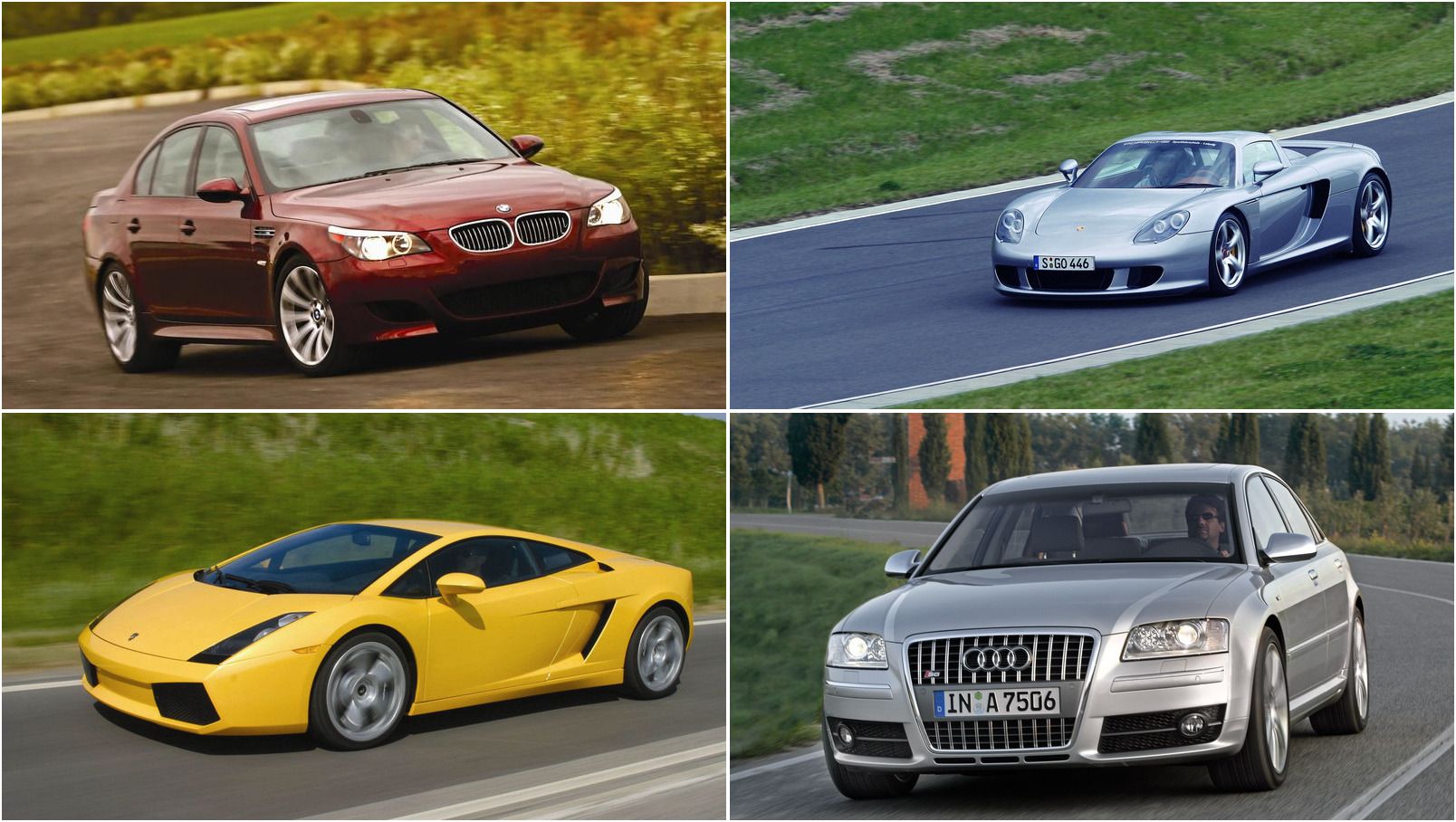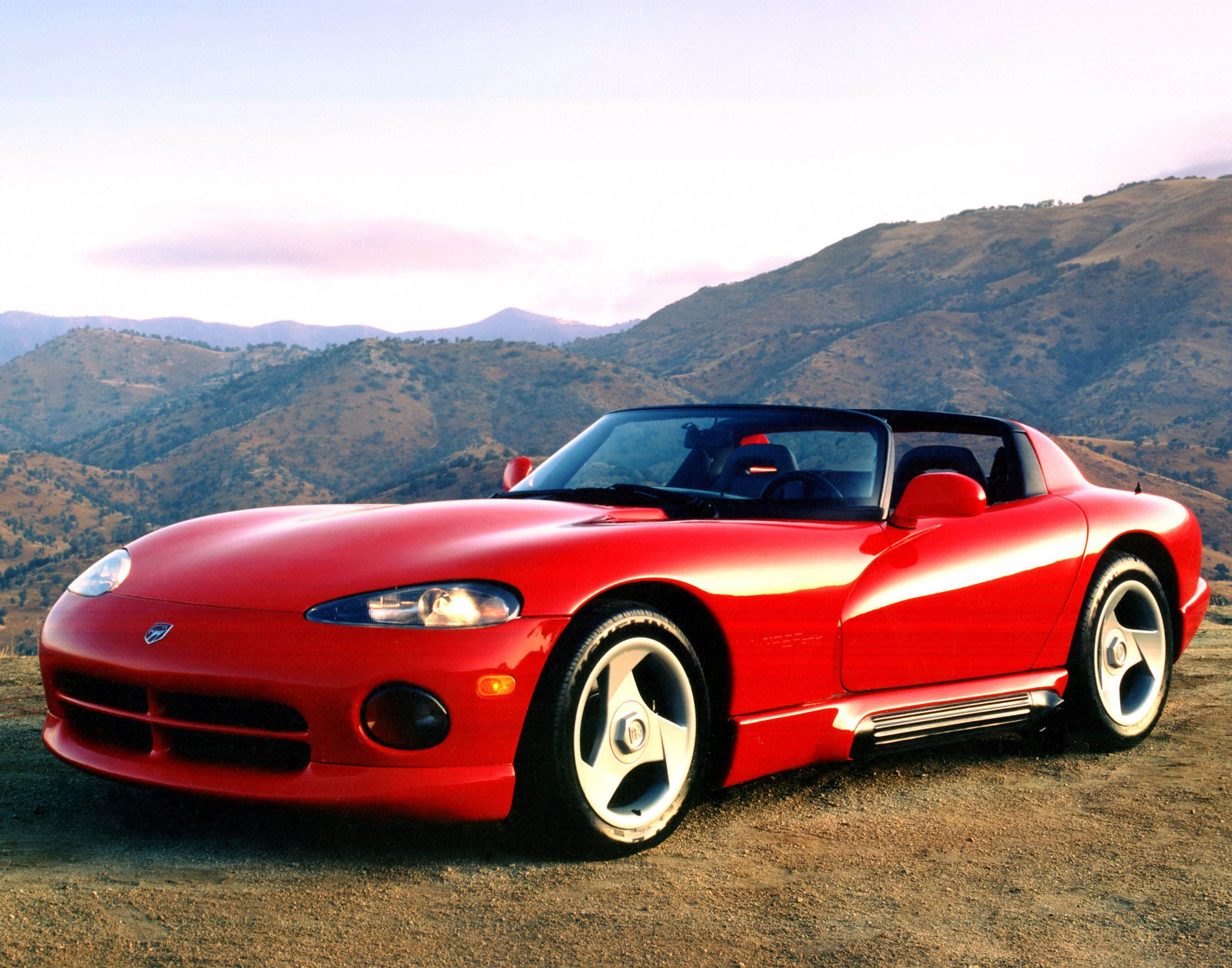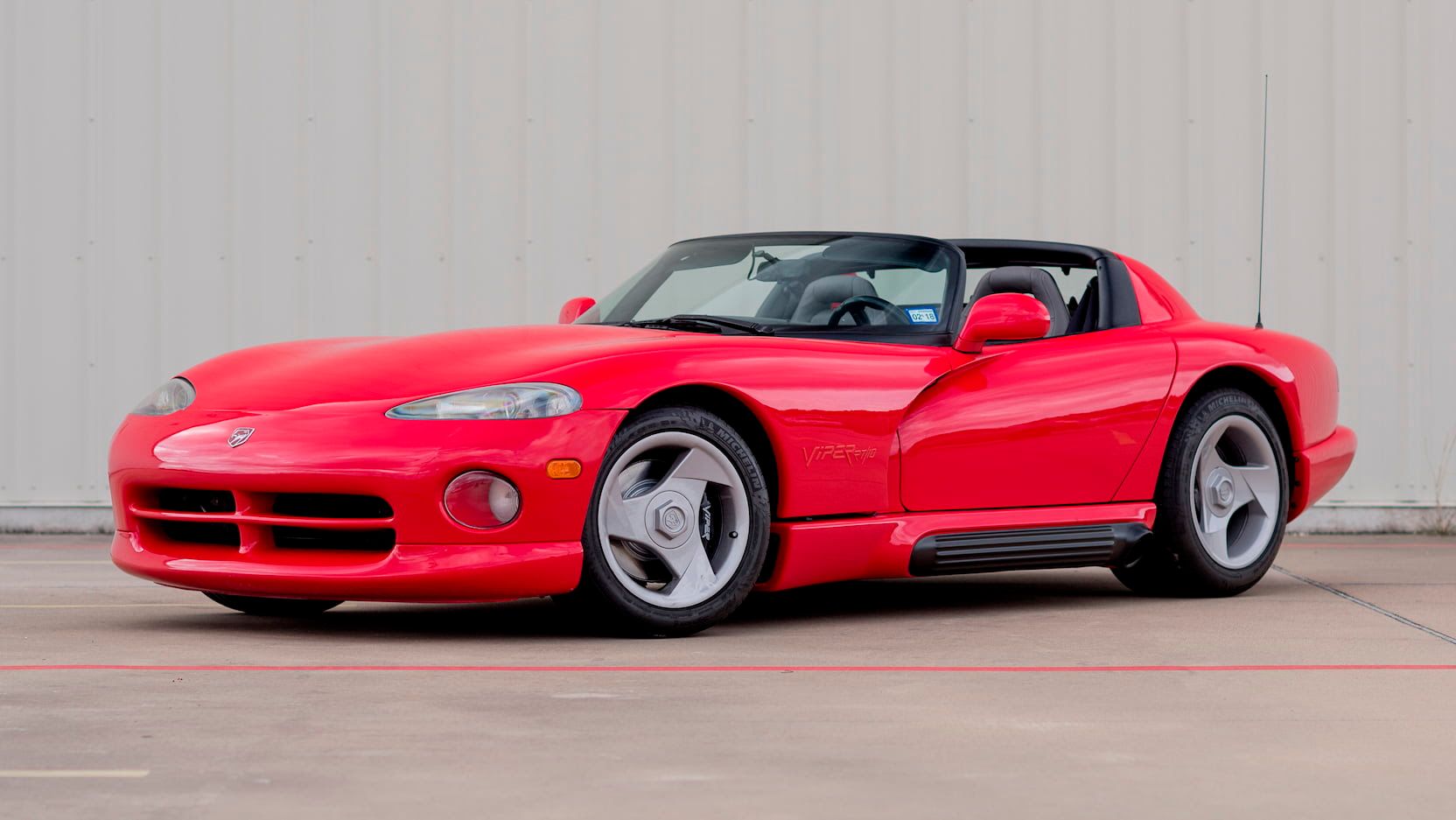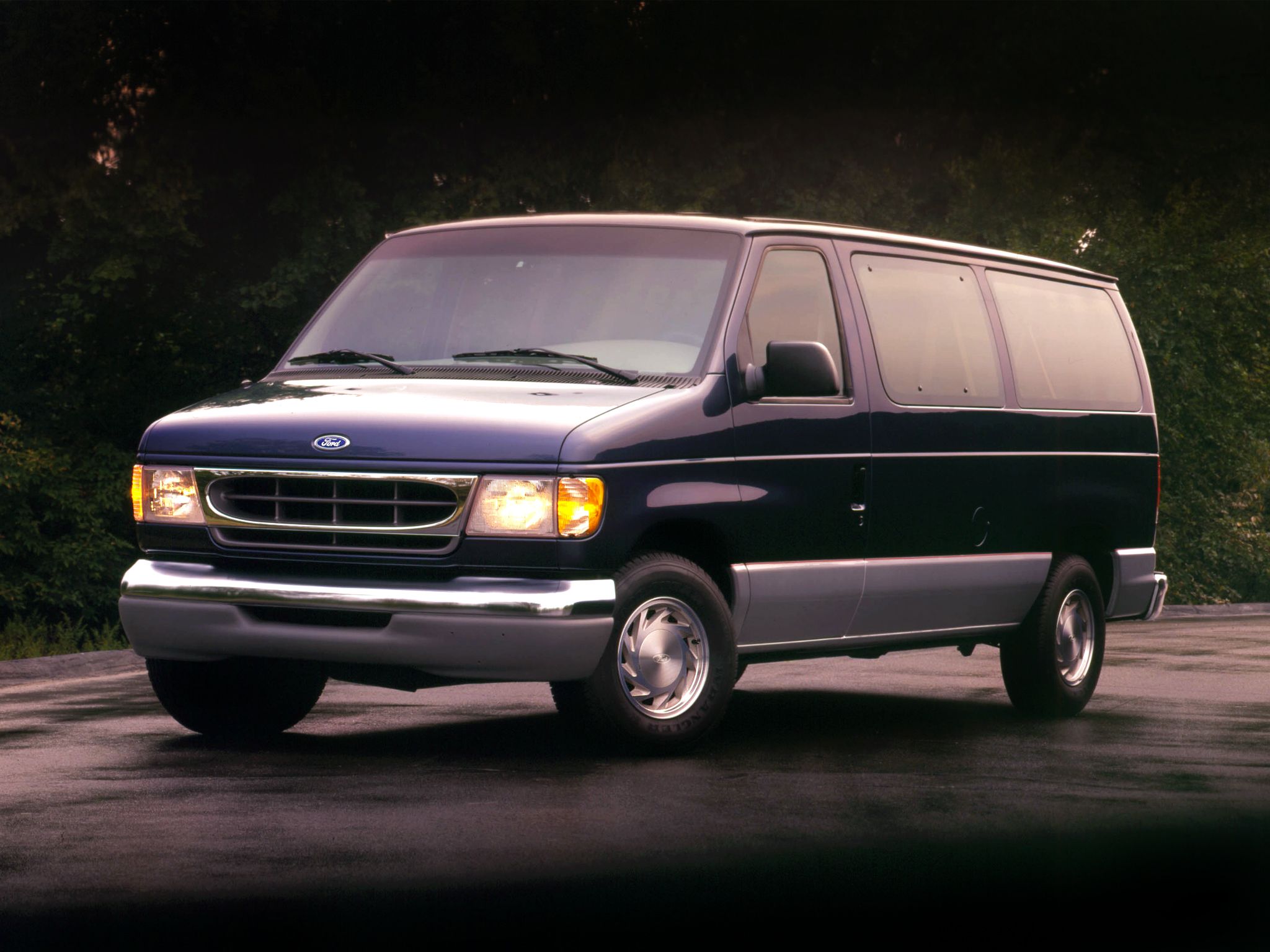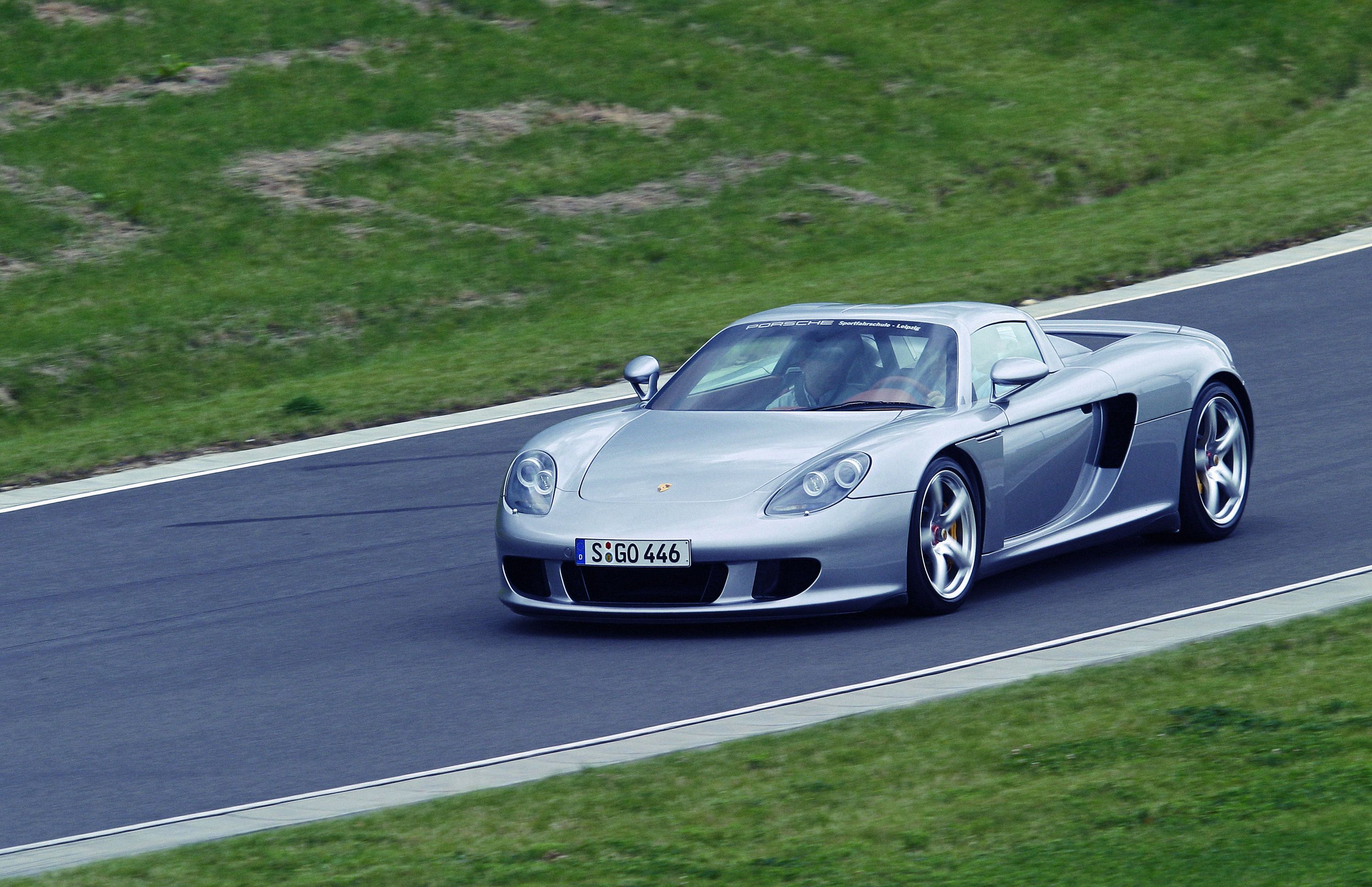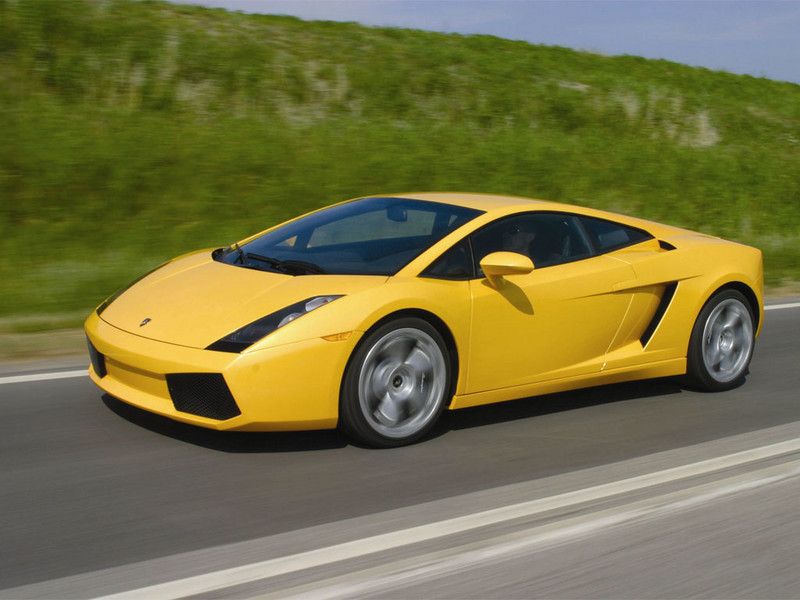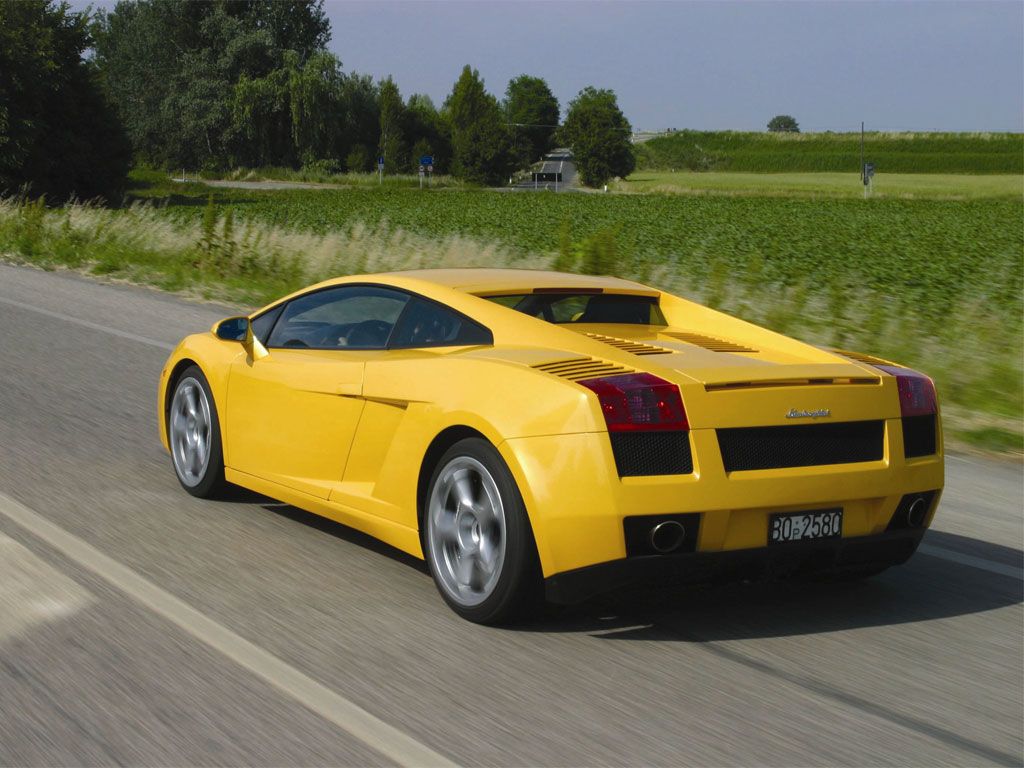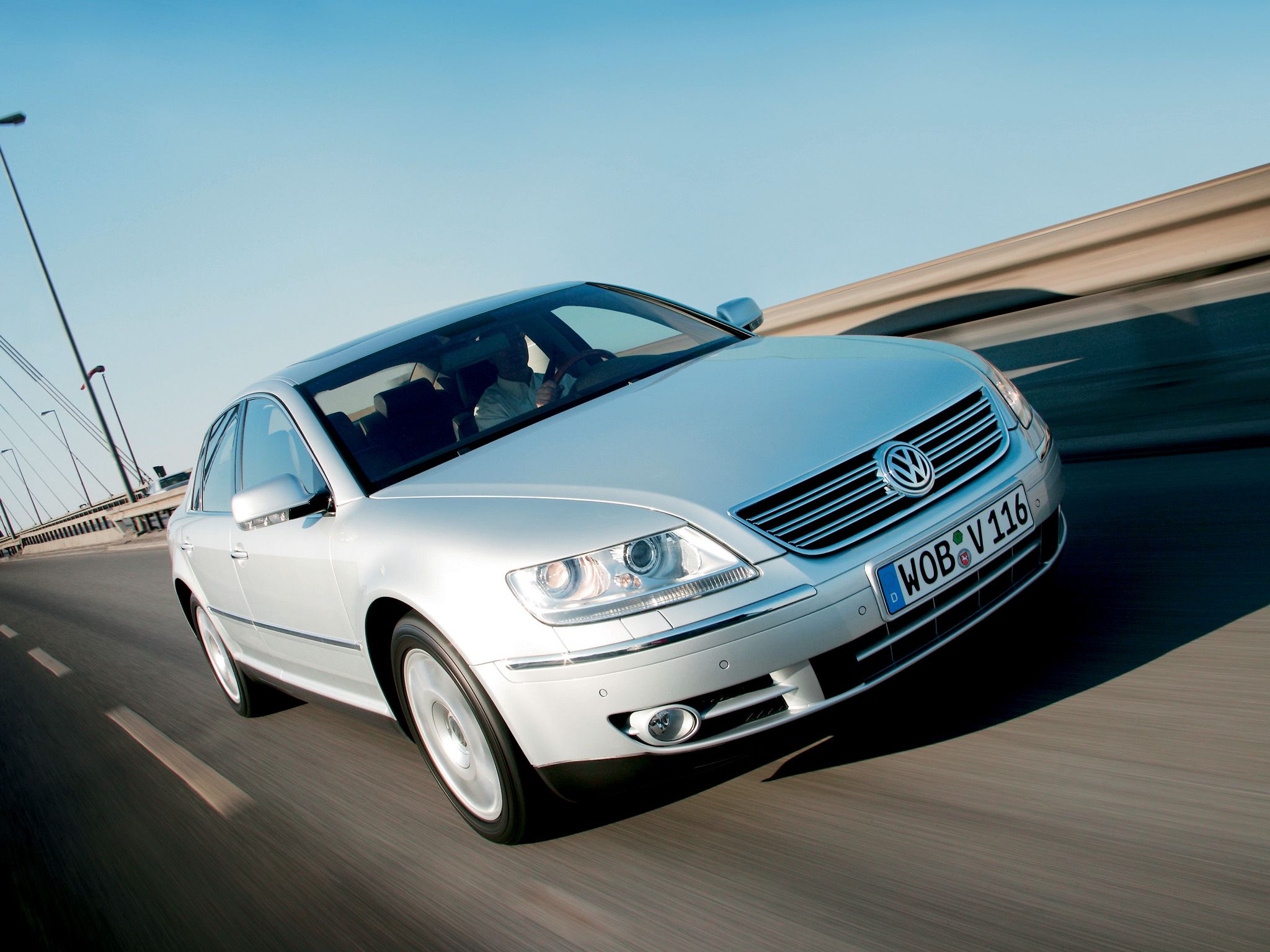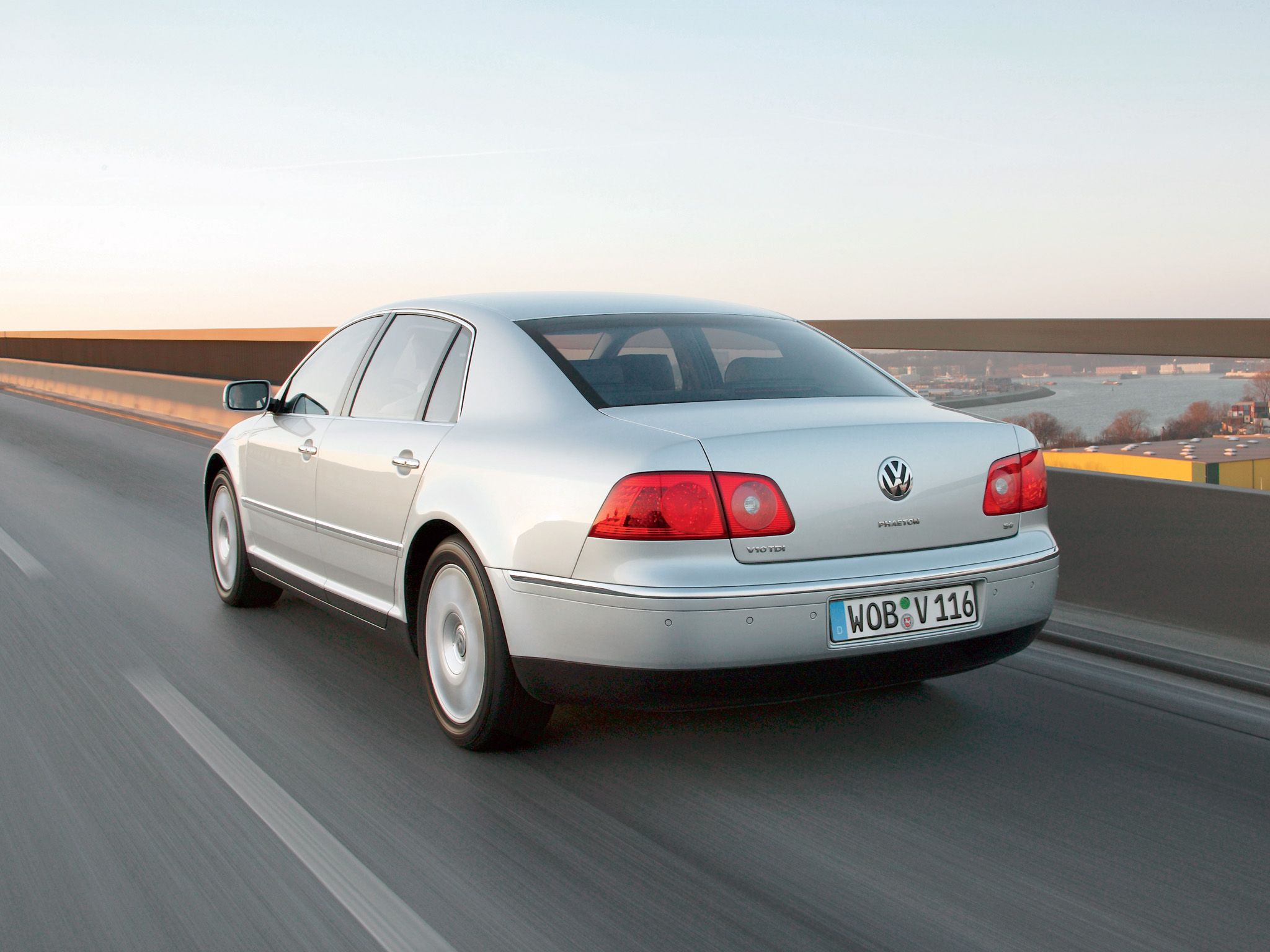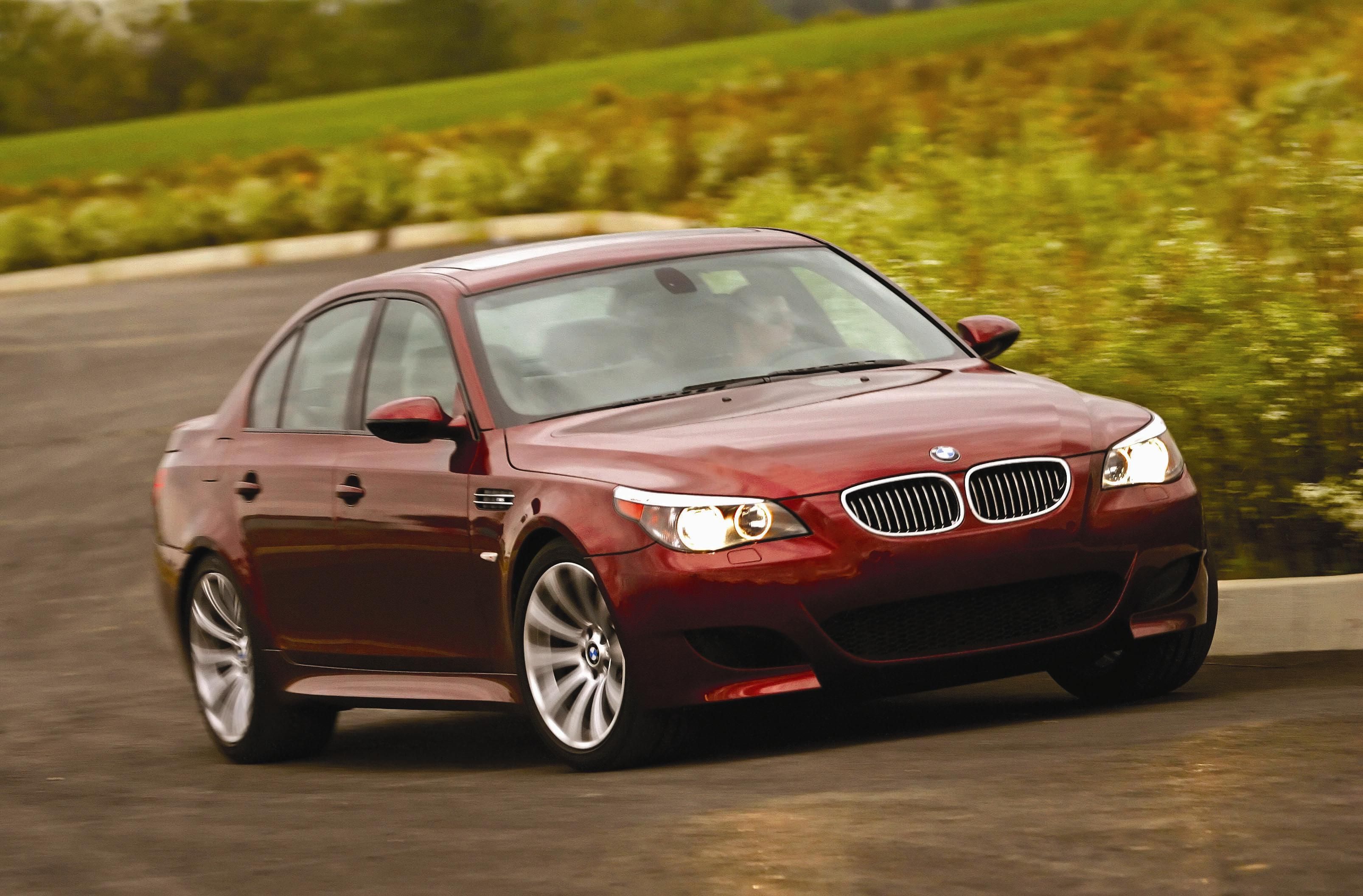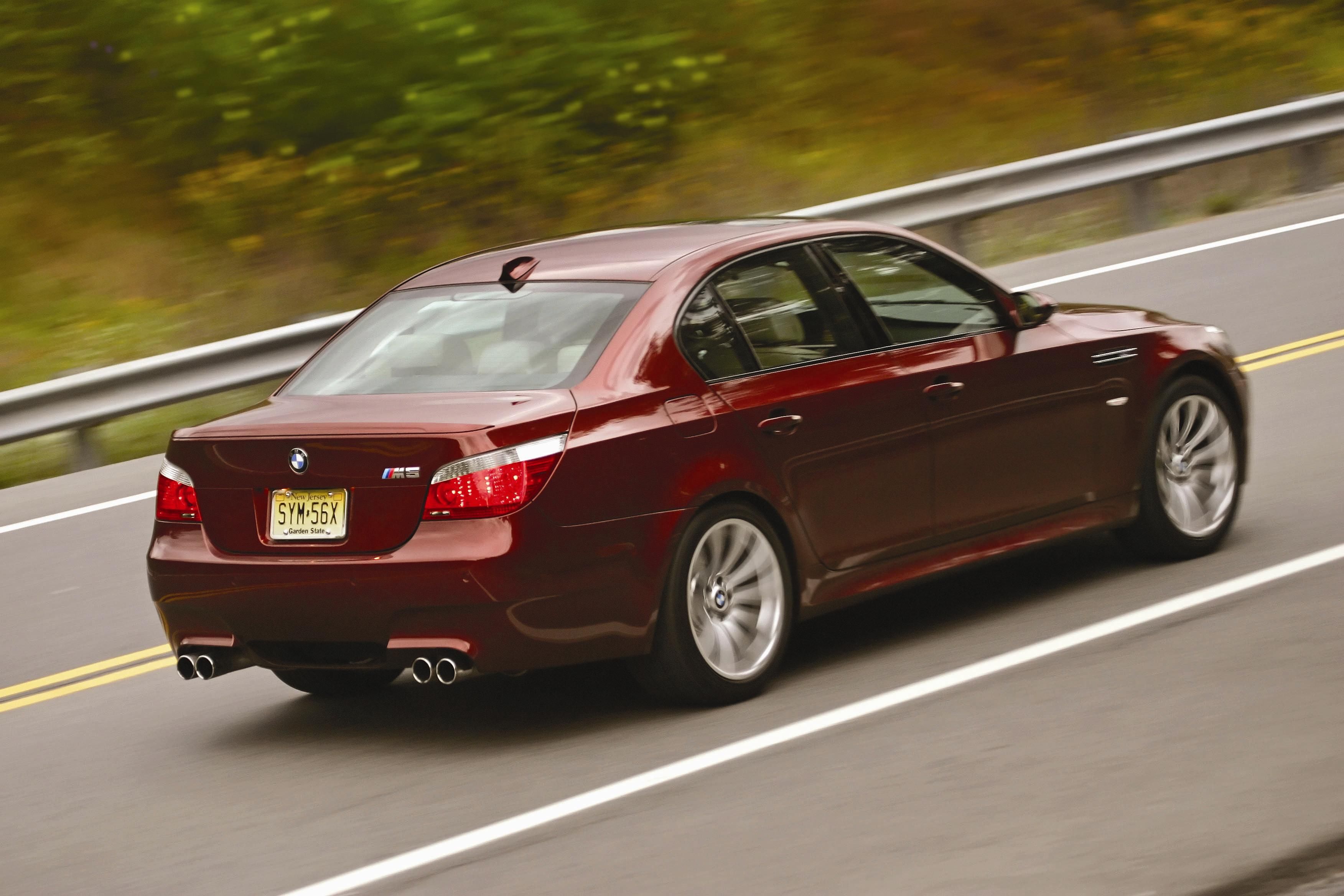While V-8 and V-12 engines have been somewhat popular since the early days of the automobile, the V-10 made its debut in production cars much later. That's mostly because each cylinder bank works as a straight-five engine, preventing the mill from having the natural balance found in other powerplants. Reducing the vibrations in a V-10 engine requires further development, which also adds additional costs. While the first V-8s and V-12s were developed as early as the 1900s, the first known V-10 appeared in 1936 when Busch-Sulzer created a prototype locomotive. Porsche then introduced a massive 37.4-liter V-10 diesel for the Leopard 1 tank in 1965. In 1983, Tatra launched its own V-10 diesel for the T815 truck. The first production car with a V-10 didn't arrive until 1992 when Dodge launched the Viper. Since then, a handful of automakers created performance vehicles powered by V-10 mills. Here's a list of the most iconic cars.
1992 Dodge Viper
Previously known for affordable and somewhat mundane cars,
1992 Dodge Viper specifications
|
Engine: |
8.4-liter V-10 |
|---|---|
|
Power: |
645 horsepower |
|
Torque: |
600 pound-feet |
|
Production years: |
1992-2010 and 2012-2017 |
Read our full review on the 1992 Dodge Viper
1997 Ford E Series
Ford began working on its own V-10 design in the 1990s, based on the Triton V-8 mill that debuted in the 1990s. A 6.8-liter V-10 was born, and a two-valve engine debuted in 1997. The E Series van was the first to benefit from this mill, which was optional on the E250, E350, and E450 trims. The V-10 was eventually offered in the F250 to F550 trucks starting 1999 and in the Ford Excursion SUV beginning 2000. Ford introduced a three-valve version of the 6.8-liter V-10 that was used across the Ford Super Duty line and in the E Series van until 2019. Yes, we think that driving a van with a massive V-10 engine is really cool, and that's why our list nominates the van in favor of the trucks or the Excursion model.
1997 Ford E Series specifications
|
Engine: |
6.8-liter V-10 |
|---|---|
|
Power: |
305 horsepower |
|
Torque: |
420 pound-feet |
|
Production years: |
1997-2019 |
2003 Porsche Carrera GT
2003 Porsche Carrera GT specifications
|
Engine: |
5.7-liter V-10 |
|---|---|
|
Power: |
603 horsepower |
|
Torque: |
435 pound-feet |
|
Production years: |
2003-2006 |
Read our full review on the 2003 Porsche Carrera GT
2003 Lamborghini Gallardo
2003 Lambo Gallardo specifications
|
Engine: |
5.2-liter V-10 |
|---|---|
|
Power: |
562 horsepower |
|
Torque: |
398 pound-feet |
|
Production years: |
2003-2013 |
Read our full review on the 2003 Lamborghini Gallardo
2003 Volkswagen Phaeton
Volkswagen was the third carmaker to jump on the V-10 engine bandwagon in 2003. But unlike Lamborghini and Porsche, it did it with a sedan and, more importantly, a diesel engine.
2003 Volkswagen Phaeton specifications
|
Engine: |
5.0-liter V-10 |
|---|---|
|
Power: |
309 horsepower |
|
Torque: |
553 pound-feet |
|
Production years: |
2003-2007 |
2004 Dodge Ram SRT-10
Chrysler finally took advantage of the Viper's engine for another vehicle in 2004, when it introduced the Ram SRT-10.
2004 Dodge Ram SRT-10 specifications
|
Engine: |
8.3-liter V-10 |
|---|---|
|
Power: |
500 horsepower |
|
Torque: |
525 pound-feet |
|
Production years: |
2004-2006 |
Read our full review on the 2004 Dodge Ram SRT-10
2005 BMW M5
BMW was the first of the premium German carmakers to introduce a V-10. While the 7 Series and the 8 Series were offered with V-12 engines, other performance cars were restricted to inline-six and V-8 mills. This changed in 2005 when the E60-generation M5 was launched with a naturally aspirated V-10. Dubbed S85, this engine was developed specifically for the M5 and was not related to any other mill in the lineup. But it was inspired by BMW's previous Formula One involvement.
2005 BMW M5 specifications
|
Engine: |
5.0-liter V-10 |
|---|---|
|
Power: |
500 horsepower |
|
Torque: |
384 pound-feet |
|
Production years: |
2005-2010 |
Read our full review on the 2005 BMW M5
2006 Audi S8
Audi jumped on the V-10 bandwagon only a year after BMW, but it went for the full-size market by dropping a V-10 in the larger A8.
2006 Audi S8 specifications
|
Engine: |
5.2-liter V-10 |
|---|---|
|
Power: |
444 horsepower |
|
Torque: |
398 pound-feet |
|
Production years: |
2006-2010 |
Read our full review on the 2006 Audi S8
2008 Audi RS6 Avant
Following BMW's unveiling of the V-10-powered M5, Audi dropped a similar engine in the RS6. But unlike BMW, Audi didn't build it from scratch. The German firm borrowed the V-10 from Lamborghini, also owned by the Volkswagen Group, just like it did for the S8. The 5.0-liter V-10 was also related to the engine in the Lambo Gallardo, but it featured around 400 unique parts and, more importantly, it was twin-turbocharged.
2008 Audi RS6 Avant specifications
|
Engine: |
twin-turbo 5.0-liter V-10 |
|---|---|
|
Power: |
571 horsepower |
|
Torque: |
479 pound-feet |
|
Production years: |
2008-2010 |
Read our full review on the 2008 Audi RS6 Avan
2009 Audi R8
The R8 was the third Audi powered by a V-10 engine. Originally introduced in 2006 as the company's first mid-engined sports car, the R8 debuted with a 4.2-liter V-8. In 2009, Audi decided to also offer a 5.2-liter V-10 based on the Lamborghini Gallardo, and the 5.2 FSI Quattro model was born. The engine was originally rated at 525 horsepower and 391 pound-feet of torque, but output increased as Audi updated the R8 and introduced special models. In 2014, the R8 LMX arrived with 562 horsepower and 398 pound-feet of twist. Redesigned in 2015, the R8 dropped the V-8 engine but continued to feature the V-10. As of 2020, the R8 Performance Quattro is the most powerful iteration with 612 horsepower and 428 pound-feet on tap.
2009 Audi R8 specifications
|
Engine: |
5.2-liter V-10 |
|---|---|
|
Power: |
612 horsepower |
|
Torque: |
398 pound-feet |
|
Production years: |
2009-present |
Read our full review on the 2009 Audi R8
2011 Lexus LFA
The Lexus LFA is one of the most iconic V-10 cars ever built. It was also the company's flagship model and its only supercar to date.
2011 Lexus LF-A specifications
|
Engine: |
4.8-liter V-10 |
|---|---|
|
Power: |
563 horsepower |
|
Torque: |
354 pound-feet |
|
Production years: |
2011-2012 |
Read our full review on the 2011 Lexus LFA
2014 Lamborghini Huracan
We end this list with one of the very few V-10 cars still in production.
2014 Lamborghini Huracan specifications
|
Engine: |
5.2-liter V-10 |
|---|---|
|
Power: |
631 horsepower |
|
Torque: |
443 pound-feet |
|
Production years: |
2014-present |
Read our full review on the 2014 Lamborghini Huracan
V-10 Engine Q&A
What is a V-10 engine?
The V-10 engine is a ten-cylinder piston engine with the cylinders arranged in a V configuration around a common crankshaft. Each cylinder bank functions as a straight-five engine, which causes an unbalanced rocking couple. This means that unlike V-8 or V-12 engines, the V-10 does not have perfect engine balance. In order to reduce vibration, V-10 engines are usually fitted with balance shafts.
Are there any new cars that still come with a V-10 engine?
As of 2020, only two production cars made by mainstream automakers come with a V-10 engine: the Lamborghini Huracan and the Audi R8. Both cars are made by companies owned by the Volkswagen Group, so their V-10 are actually highly related.
Is the V-10 engine dead?
The V-10 was never as popular as the V-8 or the V-12. Because it doesn't have natural engine balance, it was often overlooked by mainstream carmakers. While the V-8 and V-12 became popular in the early days of the automobile, the V-10 didn't make it into a mainstream car until the early 1990s. Since then, less than 20 vehicles have been produced with a V-10 mill. Although it's not as popular as the V-8 and V-12, the V-10 engine is by no means dead. At least not until popular cars like the Lamborghini Huracan and Audi R8 will be fitted with different engines. V-10 engines are still a bit more popular than V-16 and W-16 mills.
What cars can have a V-10 engine swap?
This usually depends on how much space there's under the hood. A car that's usually sold with a four-cylinder engine will need extensive modifications in order to receive a V-10. However, cars that are sold with higher displacement engines can be fitted with a V-10 with minor changes.
How much is a V-10 engine?
It depends on the model and the company. Mainstream manufacturers don't offer V-10 crate engines, but you can buy aftermarket mills based on designs from Ford and Chevrolet. Prices for a complete engine usually starts from around $3,500, but some mill will set you back up to $6,000. High-performance engines are obviously much more expensive. Some companies sell Dodge Viper crate engines for around $20,000.

